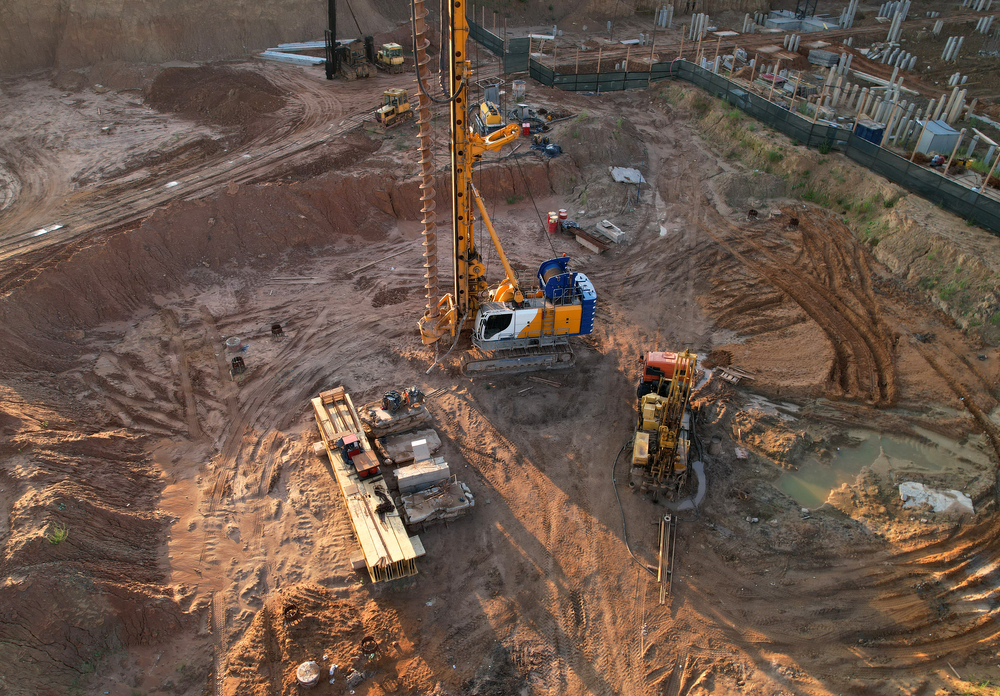An Unbiased View of Geotheta
Table of ContentsGeotheta Fundamentals ExplainedThe Best Strategy To Use For GeothetaGeotheta Can Be Fun For EveryoneGeotheta - Truths
They work together with civil engineers, structural engineers, architects, and various other experts to incorporate geotechnical considerations into the overall job style and building and construction process. This requires reliable team effort, coordination, and interaction to make sure that the geotechnical elements align with the task purposes and satisfy regulative requirements.Mining & Products Design: Principles of exploration, infiltration rates, and factors influencing the option of boring method. Features of dynamites, firing systems and blast patterns. Blowing up methods in surface and below ground functions. Unique blowing up techniques at excavation boundaries. Vibration and sound control. Mechanical and continuous approaches to fragmentation, consisting of longwall shearing and fullface boring.
Modelling of fragment and bit dimension distributions; comminution as a transfer feature. Comminution technology: squashing, grinding, dimension classification. Integrated evaluation of fragmentation and comminution operations. Supplied by: Mining & Products Engineering.
Things about Geotheta
Bachelor's level programs in civil, geotechnical, geological, and ecological engineering usually last 4 years and consist of basic education programs in English, social scientific research, and the humanities, in addition to programs in sophisticated maths, architectural geology, and liquid mineralogy. (https://medium.com/@ianhammond2191/about)
Geotechnical design involves the assessment of the soil and rock problems at a particular site, and their effects for the development of that website. As a lot of frameworks count on the ground for support, it is without surprise that a detailed understanding of the ground conditions, and the suitability of structure systems, are vital to the long-term stability and performance of the structure or framework.
Specialising in the examination of geological formations and ground behavior, geotechnical designers carry out clinical investigations and testing to recognize the influence these geological developments may have on the design and building and construction of building, civil and facilities projects. This expertise is vital for the style and construction of buildings, roads, tunnels, dams, bridges, and water supply and sewer system.
The geotechnical team at Douglas Partners routinely talk to architects, style designers, designers, and building contractors to make suggestions on style and advancement propositions to make certain that the developed structures are suitably made for the ground problems. For instance, the layout of footing systems requires to take into consideration the weight of the structure, the capacity of the ground to sustain that weight together with activity tolerances and effective construction.
Some Known Details About Geotheta
This job is significantly simplified by the use of our Douglas Map geospatial system which makes this details easily accessible in a very easy to utilize internet browser user interface. A geotechnical designer will guide the drilling of boreholes and test pits to accumulate soil and various other samples, and additionally examine surface functions and ground direct exposures to develop a geotechnical version of the subsurface conditions.
Depending upon the task type and ground problems experienced, research laboratory testing may to name a few things examine strength, compressibility, reactivity and/or permeability of dirt and rock examples. After this data is accumulated and collated, the results are utilized for a geotechnical version of the website, which is generally provided as sections across the site.

A geotechnical examination naturally can just assess the ground conditions at the places drilled or dug deep into. All-natural variants in dirt and rock my link conditions can happen across a site and between test places. It is as a result great technique that the geotechnical designer be preserved throughout construction of the job to offer on-site verification that the ground problems come across follow the assumptions and advice provided in the geotechnical investigation report.
Not known Facts About Geotheta
Geotechnical designers use their comprehensive understanding of soil and rock to assess threat and fix issues on diverse framework projectsGeotechnical design is a specialist branch of civil engineering which looks at the practices of earth materials and the application of dirt and rock auto mechanics. Consulting Engineers. As a geotechnical designer, you will assess the physical, mechanical and chemical properties of soil and rock in order to design structures, keeping frameworks and earthworks
Geotechnical design is very closely linked to and overlaps with, both design geology and ground engineering - https://fliphtml5.com/homepage/bdjcx/geotheta/. It's feasible to specialise in geotechnics or benefit a geotechnical company yet be called a design rock hound or a ground designer. As a geotechnical designer, you'll need to: develop and maintain connections with clients and various other experts associated with the website, throughout each projectmaintain security criteria on website bear in mind cost implications when you make recommendationsstudy geological maps and airborne photos from a series of resources and from different time periodsexamine construction intends to see exactly how feasible they are based upon your understanding of the siteinvestigate threats or geological risks for the sitesearch for environmentally delicate functions, such as landfill beginning to establish valid and interpretive ground modelsplan area investigationsdrill and analyse examples of bedrock, soil, groundwater and added materials oversee other specialists on sitesolve technical concerns as they occur, such as unanticipated frameworks at drill sitesmonitor conditions throughout and after building to see to it structures are secure in the short and long termadding data gathered on website to your first researchcreating geotechnical calculations, illustrations, and 2 or three-dimensional computer designs analyzing the datamaking suggestions concerning the proposed use the website
